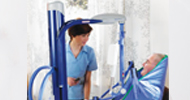
DR imaging technology has emerged as the leading solution for workflow, productivity and X-ray image quality. However, as facilities plan their migration to DR, there are valuable bridge solutions well able to meet their imaging need as well as provide a cost-effective path to DR in the future.

Swaroop Ghosh, General Manager-Digital Radiography, Carestream Health India
X-ray technology has long been the go-to diagnostic tool for many medical procedures and exams. Ongoing advances and improvements within the technology indicate that X-ray imaging will remain a key resource for years to come in medical facilities around the world.

In todays healthcare arena, economic pressures are forcing many imaging facilities to accomplish more in the face of reduced funding”at the same time, most refuse to allow compromise of image quality or patient care. Therefore, when investing in an X-ray system it is important to avoid paying high costs for capabilities not needed today while ensuring that the new system can be costeffectively upgraded with features that may become crucial tomorrow.
The trend in the market for some time now has been the movement away from film-based and Computed Radiography (CR) towards Digital Radiography (DR) systems. The reason behind this shift is Computed Radiography (the image is captured on a phosphor screen and then scanned, effectively digitising the image) and DR (which utilises direct digital capture and processing of the image) both offer robust digital imaging and advanced image processing. However, DR technology stands alone with advantages such as lower dose requirements, elevated productivity, gains in overall workflow and faster time to diagnosis.
Be that as it may, there are still highperforming alternatives to the cost of a new DR suite. Facilities lacking the budget or the patient volume to make productivity an overriding concern may still find that a traditional analog x-ray system with a CR capture and digitising option to be the best solution while planning a DR migration. Making the right choices within the CR context include single cassette or multi-cassette systems, tabletop or floor stand models, and relative cassette processing speeds- all with their distinct advantagesand associated price tags.

Selecting a vendor that offers a broad range of analog x-ray, CR and DR solutions helps facilities begin with the optimal system, then easily bridge the gap when the time is right to retrofit the existing analog room with a wireless DR detector. This strategy delivers all the benefits of DR imaging, along with the patient positioning flexibility of a cassette-size detector, without the large capital investment in an entirely new, integrated DR room.
Lastly, by purchasing all of the abovementioned x-ray equipment from the same vendor, facilities can then utilised the same detector from system to system, room to room, and even in mobile x-ray systems. This keeps that detector providing a high return on investment on a 24/7 basis.
By considering all of these issues while determining a 5-year plan – and, by partnering with an x-ray imaging vendor, who provides a broad set of options and trustworthy guidance – facilities can select both an optimum solution for today, as well as a cost-effective path for DR migration in the future.
Be a part of Elets Collaborative Initiatives. Join Us for Upcoming Events and explore business opportunities. Like us on Facebook , connect with us on LinkedIn and follow us on Twitter , Instagram.












